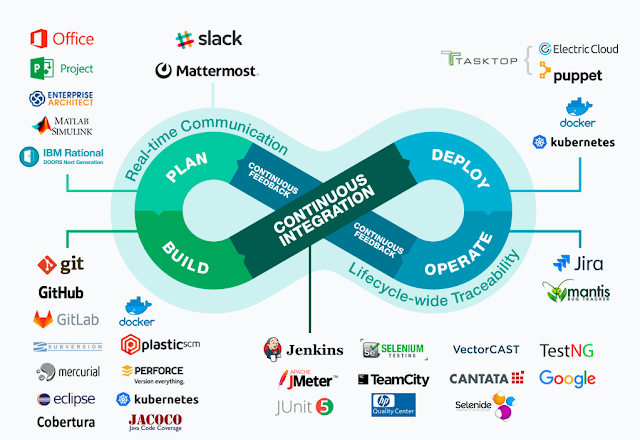All About Kubernetes (A Complete Guide to DevOps)
What is Kubernetes?
Hey Folks,We are here with the latest blog on Kubernetes. I would strongly recommend first to go through my below-mentioned blogs if you don't have any idea on DevOps and Microservices.
Where I have explained in very simple layman language what these terms actually mean into Computer Science.
READ MORE: ALL ABOUT DEVOPS (A COMPLETE GUIDE TO DEVOPS)
READ MORE: HOW TO IMPLEMENT MICROSERVICE CODED IN HACKATHON EVENT
READ MORE: HOW TO IMPLEMENT MICROSERVICE CODED IN HACKATHON EVENT
NOTE: You can skip if you are already aware of the above mentioned technologies.
So as you know nowadays resources are being managed virtually. Also, the concept of Virtualization is being implemented on a big scale. Where we have big Hardware which divided into many individual Services.
Please go through my below mention blog to understand more on Virtualization & Cloud.
As now you are aware of all basic concepts. Let's jump to point.
What is Kubernetes?
Kubernetes is a flexible, portable, open-source platform for managing containerized services and usage, which makes it easier for both automation and explanatory configuration. The ability of rapidly growing ecosystem is its major advantage. Kubernetes support, tools, and services are available on a large-scale.

Future of Resources
So as mentioned above Kubernetes is an open-source platform. Use to manage, maintain, and deploy Dockerization and Containerized based services under a single umbrella.
Its services and support are highly available and introduced/supported by Google. Which makes it highly popular among IT industries.
Now as you all know and have a basic idea on Kubernetes and its working lets deep dive into its services and its working.
Let's start with the Installation part first.
Prerequisites for Kubernetes:
- Hardware Requirements
- Ubuntu 16.04+
- Debian 9
- CentOS 7
- RHEL 7
- Fedora 25/26 (best-effort)
- Master node 2GB Memory
- Worker node 1GB Memory
- The master node at least 1.5 CPU Cores
- Worker node at least 0.7 Cores
- Cluster Setup
- kubeadm: the command to bootstrap the cluster.
- kubelet: the component that runs on all of the machines in your cluster and does things like starting pods and containers.
- kubectl: the command-line tool to talk to your cluster.
- Docker and Docker Demon
Some Insights from Kubernetes:
Q1. What are the features of Kubernetes?
Ans: Below mentioned are the features of Kubernetes:
1. Automated Scheduling
2. Self Healing Capabilities
3. Automated rollouts and rollback
4. Horizontal Scaling and Load Balancing
Q2. What do you understand by a node in Kubernetes?
Ans: Following are the details about a node in Kubernetes:
1. A node in the Kubernetes cluster is the main worker machine.
2. They are also known as minions.
3. It could run on a physical machine or a VM.
4. Node provides all the necessary services to run Pods.
5. A node in the Kubernetes system is managed by the master
Q3. What do you understand by pods in Kubernetes?
Ans: A Kubernetes pod is nothing but a group of containers. They are deployed together on the same host.
Thanks & Regards,
Tapan Patni
Email: tapanpatni58@gmail.com
Linkedin: https://www.linkedin.com/in/tapan-patni
BlogSpot: https://tapanpatni58.blogspot.com
Tapan Patni
Email: tapanpatni58@gmail.com
Linkedin: https://www.linkedin.com/in/tapan-patni
BlogSpot: https://tapanpatni58.blogspot.com




It was a great information and Its really worth reading it.
ReplyDeleteDevOps Training institute in Ameerpet
DevOps Training in Hyderabad
DevOps Project Training
DevOps Training in Ameerpet
DevOps Training institute in Hyderabad
DevOps Course in Hyderabad
Thanks for posting such useful information. You have done a great job.
ReplyDeleteDocker and Kubernetes Training
Docker and Kubernetes Online Training
Kubernetes Online Training
Docker Online Training